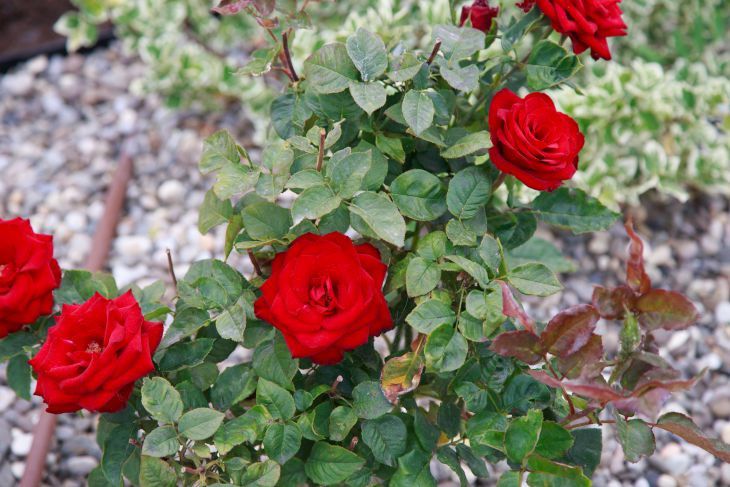Roses, the queens of the garden, can decorate any area with their magnificent flowering.
However, sometimes even the most well-groomed bushes refuse to please their owners with buds.
Experienced gardeners share secrets on how to restore roses to their former beauty and make them bloom lushly and abundantly.
Checking lighting conditions
One of the main reasons for the lack of flowering in roses may be a lack of sunlight.
Roses are light-loving plants that require at least 6 hours of direct sunlight daily.

If the bush is in the shade of trees or buildings, you should consider transplanting it to a more illuminated place.
If it is impossible to move the bush, you can try to trim the branches of neighboring plants that create shade.
Adjusting the watering regime
Incorrect watering can significantly affect the flowering of roses. Both lack and excess of moisture negatively affect the development of buds.
Roses need regular but moderate watering. The soil should be moist but not waterlogged.
Experienced gardeners recommend watering roses less often, but more abundantly, so that the water penetrates deep to the roots.
It is also important to avoid getting water on the leaves, especially in the evening, to prevent the development of fungal diseases.
Optimization of plant nutrition
Nutrient deficiencies or imbalances are another common reason for roses not blooming.
Roses need phosphorus and potassium to bloom abundantly. Excess nitrogen can lead to lush foliage growth at the expense of flowering.
Experienced rose growers recommend using specialized fertilizers for roses with a high content of phosphorus and potassium, especially during the period of bud formation.
Adding organic fertilizers such as compost or humus will also help improve flowering.
Correct pruning
Incorrect pruning can cause rose bushes to fail to produce flowers.
Too much pruning or pruning at the wrong time can result in the plant spending all its energy on restoring vegetative mass rather than on forming buds.
Roses should be pruned in early spring, before the active sap flow begins. It is important to consider the type of rose and its growth characteristics.
Pest and disease control
Various pests and diseases can weaken a rose bush and prevent it from blooming.
Regular inspection of plants for signs of aphid infestation, spider mites or fungal diseases will allow you to take action in time.
Preventive treatment of bushes with biological or chemical plant protection products will help prevent problems with flowering.
Taking into account the characteristics of the variety
Some rose varieties have their own flowering characteristics. For example, some old varieties bloom only once per season.
Modern remontant roses are capable of blooming several times during the summer, but require special care. It is important to study the characteristics of a particular variety and take them into account when caring for the plant.
Rejuvenation of old bushes
Old rose bushes may stop blooming due to exhaustion. In this case, rejuvenating pruning can help.
This procedure is carried out in early spring, removing all old and weak shoots, leaving only a few strong young branches.
After such pruning, the bush may not bloom for one season, but the following year flowering usually returns with renewed vigor.
Soil pH control
Soil acidity plays an important role in the ability of roses to absorb nutrients. The optimal pH level for most rose varieties is between 6.0 and 6.5.
Soil that is too acidic or alkaline can prevent the absorption of essential elements, which will affect flowering.
Regular application of organic fertilizers and, if necessary, liming will help maintain optimal pH levels.








